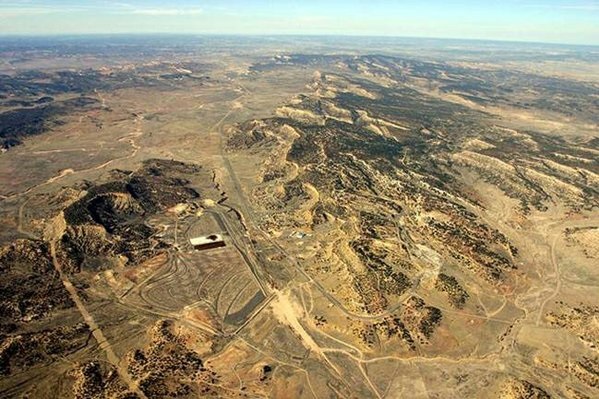Radioactive Waste 382 - Cleanup Of Northeast Church Rock Mine and Mill on Navajo Nation Land
Northeast Church Rock Mine.jpg

Problems with mining uranium do not get much coverage in the media. However, they pose a very serious threat to the environment both during the mining operation and for decades after the mine has been shut down.
The Northeast Church Rock uranium mine is located approximately seventeen miles northeast of Gallup, New Mexico. It is on the Pinedale Chapter of the Navajo Nation. Between 1967 and 1982, about three and a half tons of uranium ore were taken out of the mine. The ore from the mine was processed at the nearby Church Rock Mill under a license issued by the State of New Mexico.
Regulatory oversight for the mine has been carried out under a memorandum of understanding between the Nuclear Regulatory Commission and the Environmental Protection Agency since 1988. The NRC regulates surface reclamation and closure activities at the closed mine. The EPA regulates cleanup of the mine.
The waste pile at the mill has been temporarily covered and stabilized after over two hundred thousand tons of contaminated soil was removed from the residential areas near the mine and taken to the mine tailings impound area at the mill. The United Nuclear Corporation (UNC), a subsidiary of GE, applied to the NRC in the fall of 2018 for an amendment to the mine license to allow them to transfer a million cubic yards of mine spoils to the tailings impoundment facility at the nearby mill site.
EPA action level standards say that soil that contains two and a quarter picocuries per gram of radium-226 or two hundred thirty milligrams per kilogram of natural uranium or less are eligible to be transferred from the mine to the existing tailings impoundment area of the mill site. Any waste that contains two hundred picocuries of radium-226 or five hundred milligrams per kilogram of natural uranium or more would need to be segregated and moved to a licensed disposal facility offsite. UNC proposes building a cover over the tailings before the mine spoils are added to the pile. Then a final cover would be built over the mine spoils layer. The EPA has approved of this action in addition to other tasks at the mine and mill.
The Navajo Nation occupies more than twenty-seven thousand square miles in the states of Arizona, New Mexico and Utah. There are over two hundred and fifty thousand Navajos living in the Nation. Almost thirty million tons of uranium ore were extracted from Navajo lands between 1944 and 1986. This has left behind a horrible legacy of over five hundred closed uranium mines. Various U.S. federal agencies are cooperating to remove the greatest risks to the population of the Nation from the contamination that resulted from the mining operations on Navajo land. Since 1994, the Superfund Program has rendered technical assistance and funding to assess sites that may be contaminated and develop a response for those sites which are.
The U.S. EPA and the Navajo Nation EPA have designated forty-six of the five hundred closed mines as being priorities for cleanup. This designation is based on readings of gamma ray levels close to homes and water supplies. The Northeast Church Rock Mine has been given the highest priority for cleanup because of the number of people who live close to the mine. The public has until the 19th of April to give their comments on the NRC environmental review. The Commission with then draft an environmental impact statement of the actions proposed by UNC.